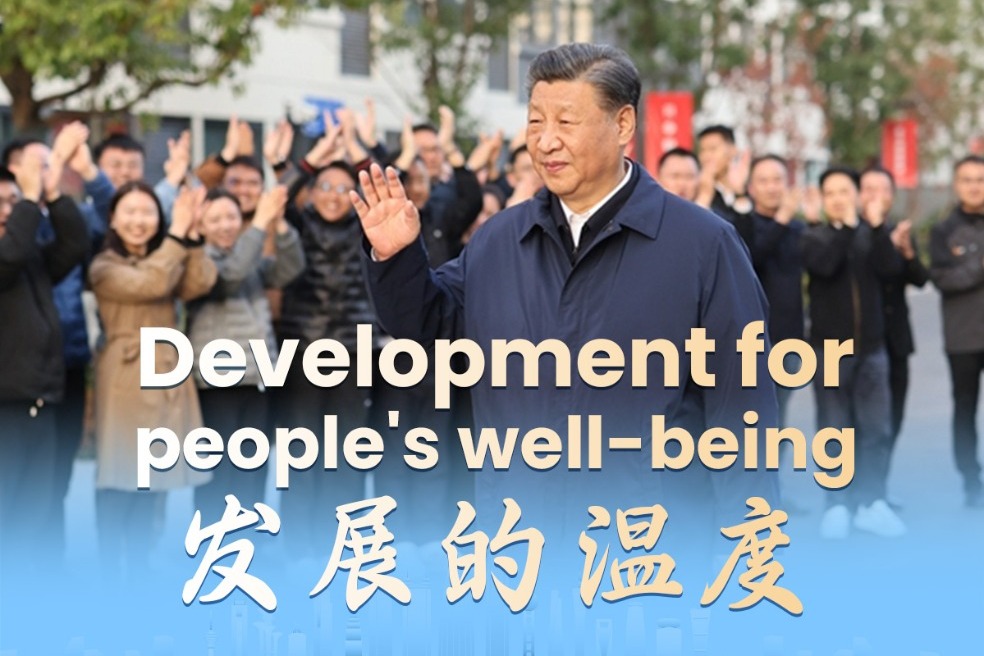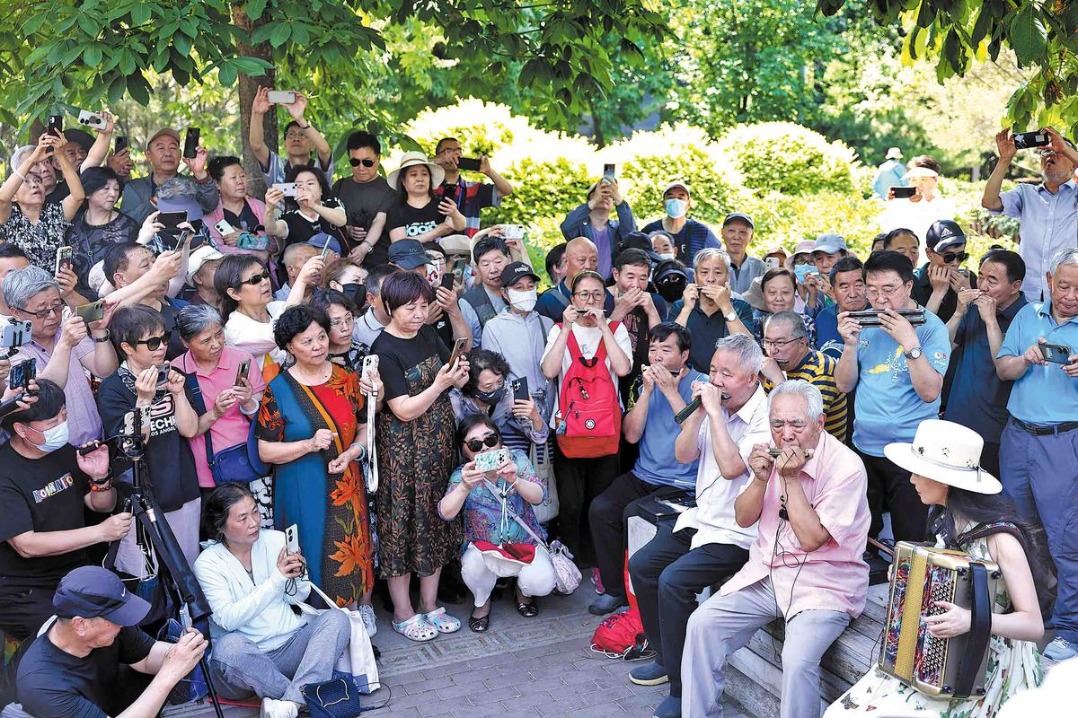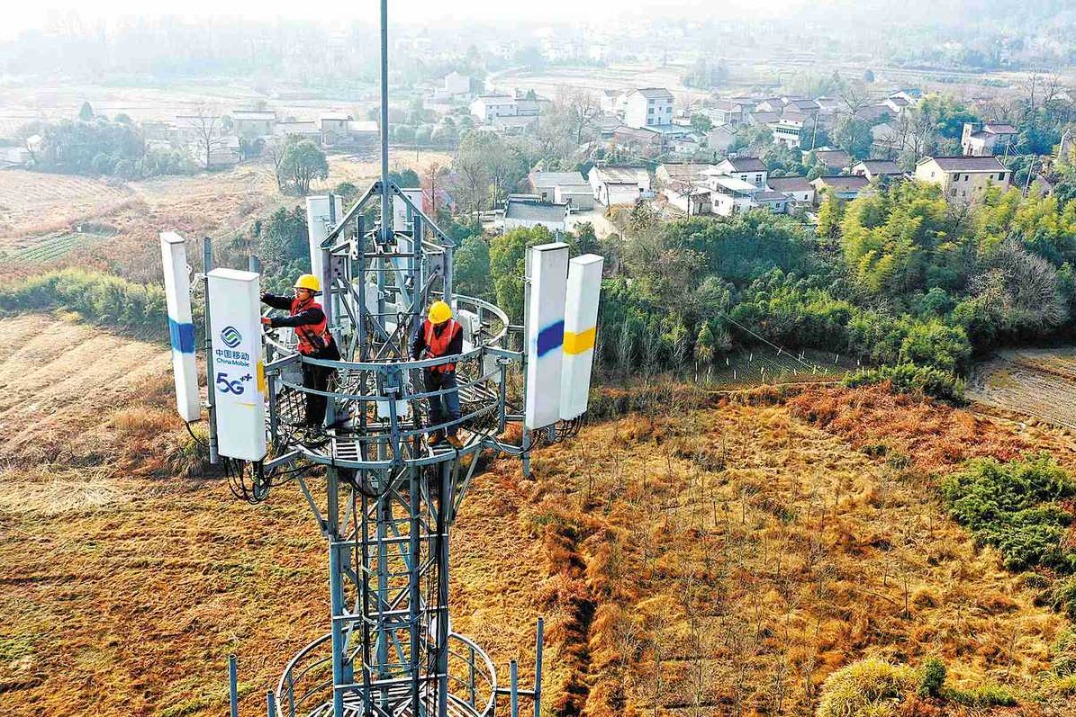China in digital transformation: Fast and furious


Here's a simple yet astonishing figure: by 2025, the number of 5G base stations in China has reached 3.64 million, accounting for more than 60 percent of the world total.
This is no longer a mere upgrade of surfing speed. It has quietly evolved into an efficient operating system for the entire Chinese society: A three-year-old in Guangxi can wave at a TV and talk to grandma 1,000km away; a fugitive who had plastic surgery and changed his name was caught in Zhejiang because the algorithm spotted his gait.
These are just a few examples of the changes that are reshaping China, all thanks to the digital technology.
Life at your fingertips — 900 million users, one QR code
China's mobile-payment penetration rate has reached an astounding 86 percent, the highest in the world. A street-vendor selling 3-yuan (half a US dollar) pancakes in coastal Yiwu hangs a QR code for customers to scan just like a Lamborghini showroom in Shanghai that sells 3-million-yuan Huracán.
Even the 54,000 rural tea farms in remote Guizhou can sell fresh leaves directly on TikTok and receive payment in 0.1 seconds. For the elderly people, facial recognition systems were established in 30,000 post offices all around the country, allowing pension withdrawal in a blink.
The time cost of "getting things done" — topping up a medical card, paying utility bills, filing tax returns — has fallen from hours to seconds, saving the average urban household an estimated 4.8 working-days per year.
A million town-halls
There are over 1.07 billion monthly active short-video accounts in China, almost one for every citizen. On the popular social media platform Weibo, the top 50 trending topics now originate in 27 different provinces, enabling robust public oversight and netizen-government interactions on even the most trivial incidents. A migrant worker's 15-second clip exposing wage arrears can reach 100 million views before lunch, and a provincial governor might openly reply with emojis.
According to the Chinese Academy of Social Sciences, the "diversity index" of public opinion — measured by the Gini coefficient of hashtag sources — improved from 0.61 in 2018 to 0.43 in 2024, indicating a broader, less concentrated agenda. Put more simply, via vibrant social media platforms, a million town-halls have emerged online.
Real-time policy loop
Beijing's "Quick Check" mini-program aggregates 45 million resident reports annually; 87 percent of clogged-drain or broken-street-light complaints are closed within 24 hours, and the data feed directly into next year's fiscal budget.
After a viral video showed wheelchair users struggling with uneven sidewalks, the municipal transport authority added 1,200 km of tactile paving in six months — twice the original five-year target.
Yunnan's regulatory agency runs an AI dashboard that scans 1.6 billion procurement records. In 2024 it flagged 314 suspicious bids and saved 420 million yuan of public funds, while live-streaming every audit session to 1.3 million viewers.
A society that upgrades every day
China's digital experiment is still unfinished — privacy debates, algorithmic bias and rural-urban gaps do exist — yet the direction is clear: technology is helping enhance governance, both by enabling more public participation and improving efficiency.
As China's 14th Five-Year Plan concludes in 2025, the metric that matters most might not be the billion-dollar start-ups, but the emotional bond and the trust between the government and the people it serves.
The author is a commentator on international affairs. The views don't necessarily reflect those of China Daily.
If you have a specific expertise, or would like to share your thought about our stories, then send us your writings at opinion@chinadaily.com.cn, and comment@chinadaily.com.cn.
































